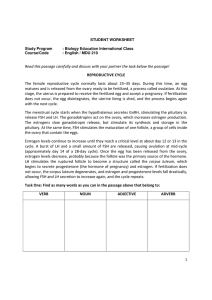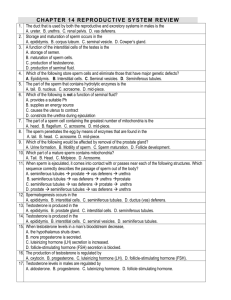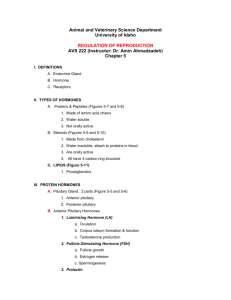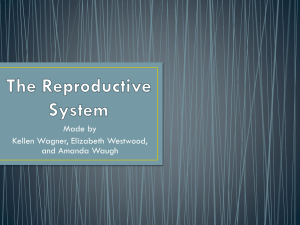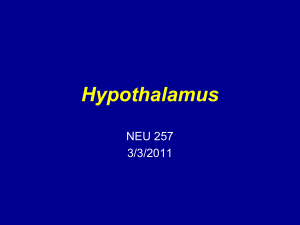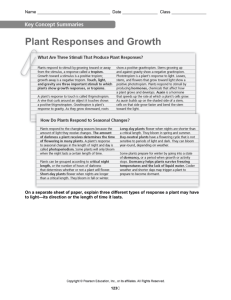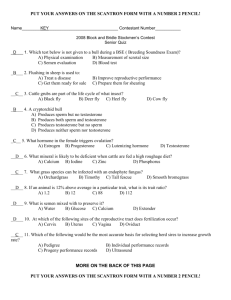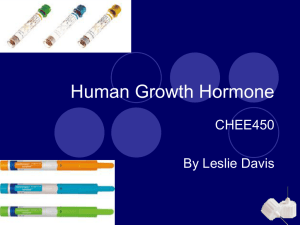Biology 12 - The Reproductive System!
advertisement
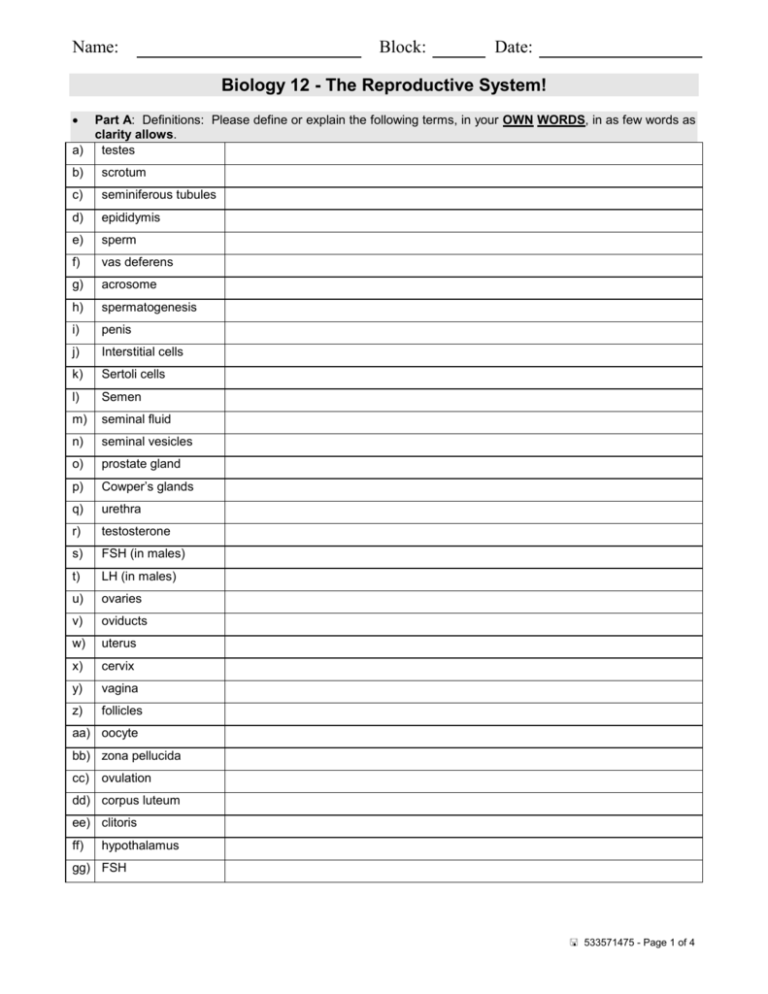
Name: Block: Date: Biology 12 - The Reproductive System! Part A: Definitions: Please define or explain the following terms, in your OWN WORDS, in as few words as clarity allows. a) testes b) scrotum c) seminiferous tubules d) epididymis e) sperm f) vas deferens g) acrosome h) spermatogenesis i) penis j) Interstitial cells k) Sertoli cells l) Semen m) seminal fluid n) seminal vesicles o) prostate gland p) Cowper’s glands q) urethra r) testosterone s) FSH (in males) t) LH (in males) u) ovaries v) oviducts w) uterus x) cervix y) vagina z) follicles aa) oocyte bb) zona pellucida cc) ovulation dd) corpus luteum ee) clitoris ff) hypothalamus gg) FSH 533571475 - Page 1 of 4 Part B: Fill In The Blanks 1. The part of the male reproductive system that creates an antacid secretion is called the ________________ ________________. 2. Semen is composed of ________________, which is made in the ________________tubules, and secretions from the ________________gland, ________________glands, and ________________vesicles. 3. The seminal vesicles secrete a fluid that is rich in the monosaccharide ________________, which serves as ________________for the sperm. 4. Cowper’s glands secrete a fluid that acts as a ________________. 5. The ________________cells in the testes produce testosterone in response to the hormone LH. 6. The hormone ________________promotes spermatogenesis. 7. The male hormone testosterone is a ________________hormome, meaning that it is ________________soluble. Like all steroid hormones, it is derived from the steroid hormone ________________. 8. ________________is made inside the seminiferous tubules and sent from there to the ________________for storage. 9. Label the diagram of the male reproductive system. 1. 2. 3. 4. 5. 6. 7. 8. 9. 10. 11. 12. 13. 10. List the structures through which sperm passes in order, from the following list: epididymis, seminiferous tubules, urethra, penis, vas deferens. ________________________________, ________________, ________________________________, ________________, ________________ 11. Label the parts of the diagram of the sperm cell and list a function for each part: Name Function W X Y Z 12. List 3 function of testosterone A B C 13. The ____________produces the hormone GnRH when testosterone and ___________levels are ________. 14. This causes the ________________pituitary gland to release ________________and ________________. 15. LH causes ________________cells in the testes to release more ________________. 16. FSH causes the seminiferous tubules to absorb more ________________, which in turn causes them to produce more ________________. As it makes more sperm, it also releases more of the hormone 533571475Page 2 of 4 Name: Block: Date: ________________. High levels of this hormone feedback ________________, causing them to release less of their hormones. 17. Label the following diagram and give a function for each labeled part. Name 18. A B C 19. 20. 21. 22. 23. 24. 25. 26. 27. 28. 29. 30. 31. 32. to the ________________and Function List 3 functions of estrogen: The entrance to the uterus is called the ________________. The female erectile organ containing many sensory nerve receptors is called the ________________. the menstrual cycle lasts on average _____days. Day 1 is the first day that ________________starts, and usually finishes by day 5. During menstruation, levels of female ________________are low. In the follicular phase (days 1 – 14), low levels of hormones are detected by the hypothalamus, which releases ________________. This is sent to the pituitary gland, which releases _________and _________. FSH causes several immature ____________, along with their surrounding ________________cells, in the ovaries to begin to develop. The developing follicle cells release increasing amounts of ________________. This hormone is responsible for the ________________phase of the uterine cycle. In the uterus, ________________vessels and ________________proliferate. Rising levels of estrogen cause the release of a large amount of LH on about day 13 which causes ________________. Ovulation normally occurs on day ________________. In ovulation, the ________________is released from the ovary, leaving behind the ________________cells, which go on to form the ________________ ________________. This structure continues to release the hormones estrogen and progesterone. Of these two hormones, ________________is most important for the luteal phase of the ovarian cycle. This hormone cause the ________________phase of the uterine cycle. The uterine glands mature and release a thick mucus, and the endometrium ________________in thickness. High levels of ________________cause ________________feedback to the anterior pituitary, shutting down the release of _________. Lower levels of LH cause the __________________ ______________to disintegrate. Since it is breaking down, it can no longer release estrogen and progesterone. Low levels of female ________________by day 28 will cause the uterine ________________to be shed, and the cycle will start anew. However, if fertilization happens, the ________________cycle will be interrupted. Fertilization usually occurs in the upper ________________. The fertilized egg is first called a ZYGOTE and then an ________________as it divides through mitosis. The embryo, upon reaching the UTERUS, will embed itself into the endometrium. This is called ________________. A shared set of membranes called the placenta forms around the embryo. This will begin to secrete the hormone HCG, which temporarily maintains the corpus luteum. 533571475 - Page 3 of 4 33. As the placenta develops and matures, it makes its own ________________and ________________. This will maintain the uterine lining so that ________________does not occur during pregnancy. 34. After 9 months, the fetus is ready to be born. The pressure of the baby’s head against the cervix causes a nerve impulse to be sent to the hypothalamus. This causes the hypothalamus to release the hormone ________________to the pituitary, which releases it into the blood. This hormone causes ________________. It operates on a ________________feedback loop. The hormone causes the uterine muscles to ________________with ever greater intensity until the baby is pushed out of the uterus through the ________________, which serves as the birth canal. 35. 533571475Page 4 of 4


